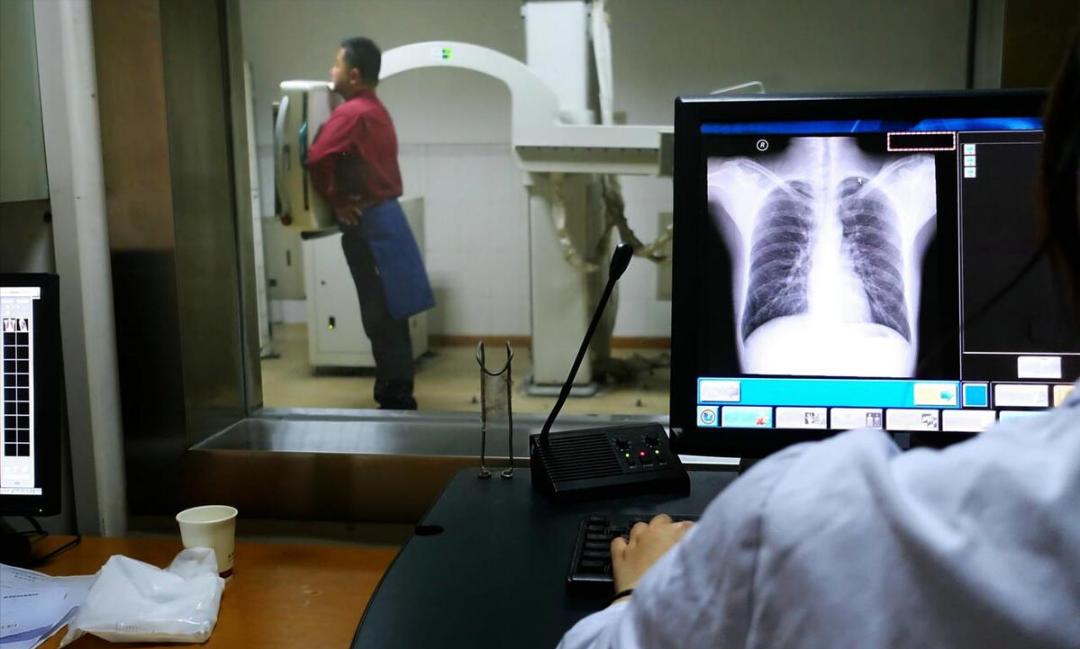Don’t touch these five items easily in physical examination.
Medical Jianghu of original DrX
The development of medicine is intended to benefit mankind, but I don’t know when the progress of medical technology has not only failed to benefit mankind, but has become a burden to many people.
Colleagues in oncology once told me a story. A middle-aged patient found that carcinoembryonic antigen (CEA) slightly exceeded the reference value during routine physical examination, but the doctor in charge of physical examination didn’t say much, just asked him to consult the oncology department.
When the other party heard that it was an oncology department, they suddenly became nervous. After all, in the face of life and health, no one dared to be careless, especially the fear of cancer of modern people has already surpassed everything.
Fortunately, colleagues in the oncology department have long been accustomed to this, so they patiently explained:
"Although there is a cancer in the carcinoembryonic antigen test, it is indeed related to cancer, but it does not mean that this indicator is abnormal and you must have cancer."
"So to speak, if the index has risen a lot, or many inspections are in a rising state, and it is higher every time, it is necessary to pay attention to it. But an occasional rise like yours is not necessarily a problem. "

In the hospital, patients often want to hear positive answers, but it seems that doctors rarely give positive answers. The same is true for this patient. After listening to the doctor’s words, he thought for a long time and finally expressed his doubts: "You said there may not be a problem, does that mean there may still be a problem?"
Normal people may have been speechless when they heard this question, but doctors have encountered this situation many times, and all they can do is patiently explain. But even if there are more explanations, even if the other person seems to be relieved, we all know that he will fall into anxiety for a long time to come, but whenever there is a little abnormality in his body, he will think about cancer.
There is nothing wrong with paying attention to health. Life is only a few decades, and everyone wants to live longer. However, when we have a physical examination, we can’t fail to check what we should check, ignore what we should pay attention to, and check a lot of what we shouldn’t check, which even leads to panic and missed diagnosis, but delays a bigger illness.
For example, the following five kinds of tests suggest that you don’t touch them easily in routine physical examination.
First, tumor markers
Seeing this, many people can’t help but question, isn’t it that the higher the tumor marker, the greater the possibility of getting cancer? Why don’t doctors recommend checking this?
In fact, when you spend a lot of money or even thousands of dollars to make a set of tumor markers, if the results are normal, does it mean that you don’t have a tumor? Or if the result is abnormal, you must have a tumor? The answer is not necessarily, because tumor markers are indeed related to tumors, but they are not completely equivalent.
Although the higher the value, the clearer the meaning, but sometimes even in the late stage, or the focus has been widely metastasized, but the value is not necessarily high, and even the normal value is possible. This is because tumor markers are not specific indicators of cancer, and their values will also be affected by other factors, such as inflammation, liver disease and pregnancy.

Let’s give another example in detail, such as alpha-fetoprotein (AFP), which is indeed related to liver cancer and testicular cancer, but not only primary liver cancer, pregnancy, active hepatitis and reproductive system tumors may lead to the increase of this index, but also different detection instruments and reagents may sometimes lead to false positives.
On the contrary, the value of some cancer patients will always be normal, so there will be false negative results. In addition, ECG, urine test and blood test results may be normal, so under the appearance of so-called "everything is normal in physical examination", it will be incredible to suddenly find cancer one day.
Therefore, we should understand what the main uses of tumor markers are, mainly for assisting diagnosis, prognosis judgment, reference for curative effect evaluation and recurrence monitoring of some cancers. To be precise, it is an auxiliary means, and we must never take it too seriously.
Second, X-ray film
This mainly refers to screening lung cancer with X-rays. If the doctor uses X-rays to screen lung cancer for you during physical examination, I suggest you switch to low-dose spiral CT.
Because X-rays have certain limitations, it is easy to miss diagnosis. If X-rays can detect lung cancer, I am afraid it is already advanced. The sensitivity and resolution of X-ray film can only be detected by relatively large lung cancer. If it is early and the tumor is relatively small, X-ray film often can’t find it, which leads to missed diagnosis.

Third, prostate color ultrasound
Prostate color ultrasound is mainly used to find prostate nodules, hyperplasia and inflammation. When many people choose to do prostate color ultrasound, they mainly want to screen for prostate cancer through this examination.
As everyone knows, prostate color ultrasound can’t accurately distinguish benign and malignant prostate lesions, and it can’t determine the nature and degree of nodules. Therefore, most of the time, color ultrasound of prostate can only be used as a preliminary reference, and can not be used as a basis for the diagnosis of prostate cancer.
Therefore, if abnormal prostate color Doppler ultrasound is found in physical examination, it is better to combine prostate specific antigen (PSA) to check. Because prostate specific antigen is a special protease secreted and synthesized by prostate epithelial cells, its clinical significance is very wide and its price is relatively low.
Iv. PET-CT
In recent years, the abuse of PET-CT has become more and more obvious and serious, which is mainly related to the benefits. After all, the price of a whole-body PET-CT examination is not cheap, and the profit can be imagined.
In addition, many institutions often exaggerate the publicity when promoting PET-CT examination, so that many people have some misunderstandings about this examination, thinking that if they have cancer, they will know if they have a whole-body PET-CT examination. It feels like this examination is a omnipotent cancer detection artifact, and it can be done once and for all.

In fact, there is no universal cancer detection means, and there is no universal cancer detection artifact. What’s more, medicine has not developed to that degree. This examination is mainly to accurately check the metabolism of a certain part of the body, which is often used for clinical diagnosis and treatment, but it is often of little significance to ordinary people.
5. Screening breast cancer with CT or infrared ray.
When doing physical examination, some physical examination centers will recommend using CT and infrared rays to screen breast cancer. This is really unnecessary, because the sensitivity of CT in detecting breast cancer is not high, especially the diagnostic accuracy of cystic-solid lesions is limited, which is often not as good as that of ultrasound, and the accuracy of tiny calcification is not as good as that of X-ray. In addition, the radiation dose is relatively large and the cost is relatively high, so the cost performance is really limited.
The same is true for infrared rays, which, on the one hand, have low sensitivity and large error, and on the other hand, require doctors to have strong subjective judgment, so it is easy to misdiagnose and miss diagnosis. Therefore, if screening breast cancer, it is suggested that breast B ultrasound or breast molybdenum target is basically enough.
Finally, I need to remind you that these are all based on the premise that you don’t have any symptoms or high-risk factors, and the specific situation needs to be treated specifically.
Read the original text